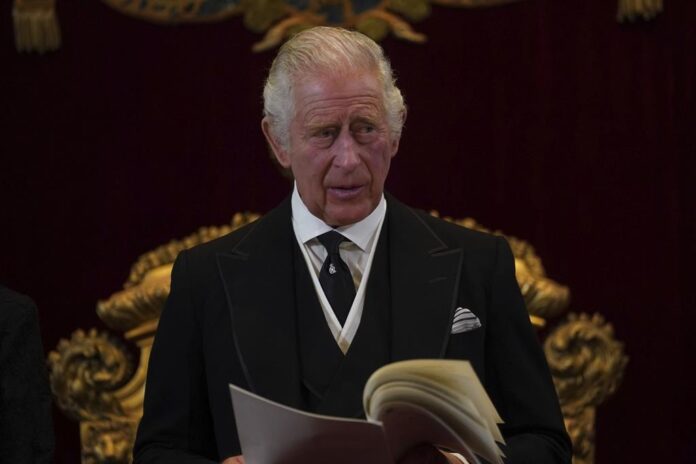Britain’s new monarch is named King Charles III, but that was not inevitable.
Charles Philip Arthur George could have chosen another royal name when he took the throne after the death of his mother Queen Elizabeth II on Thursday. While the queen used her first given name, her father, King George VI, was named Albert Frederick Arthur George and called Bertie by friends and family.
Some observers thought the new king might prefer a different name because of the historical baggage associated with the two previous British monarchs called Charles.
King Charles mourns his mother Queen Elizabeth, pledges continued service in first speech
King Charles I is the only British sovereign whose rule led to revolution and the temporary abolition of the monarchy.
Trending Stories
King Charles III proclaimed Canadian head of state at Rideau Hall ceremony
Queen Elizabeth II: The sweetest, funniest moments from her reign
He took the throne in 1625, and his reign saw a growing power struggle between the crown and Parliament, which sought to limit the king’s powers.
READ MORE: As King Charles III begins his reign, what legacy will he bring to the British throne?
After the king attempted to arrest lawmakers in the House of Commons in 1642, hostilities erupted into the English Civil War, which ended with victory for the parliamentary forces of Oliver Cromwell. Charles was convicted of high treason and beheaded in 1649 outside the Banqueting House in London, just up the street from Parliament.
The son of Charles I spent his youth abroad during Britain’s 11 years of rule under Cromwell. He took the throne when the monarchy was restored in 1660.
He had considerably less power than his father had enjoyed. The monarch was stripped of the power to make law without the consent of Parliament. Further reforms in the following decades established that the Crown must accept the will of the democratically elected Parliament, the basis of Britain’s constitutional monarchy.
Reaction as King Charles III makes his first public speech as monarch
Charles II’s 25-year reign saw the return of public entertainment after the austere years under the Puritan Cromwell, when theaters were shut and Christmas celebrations were banned.
Charles II was nicknamed the “merry monarch” because of his hedonism and many romances. The King Charles Spaniel is named after the dog-loving monarch.
© 2022 The Associated Press



